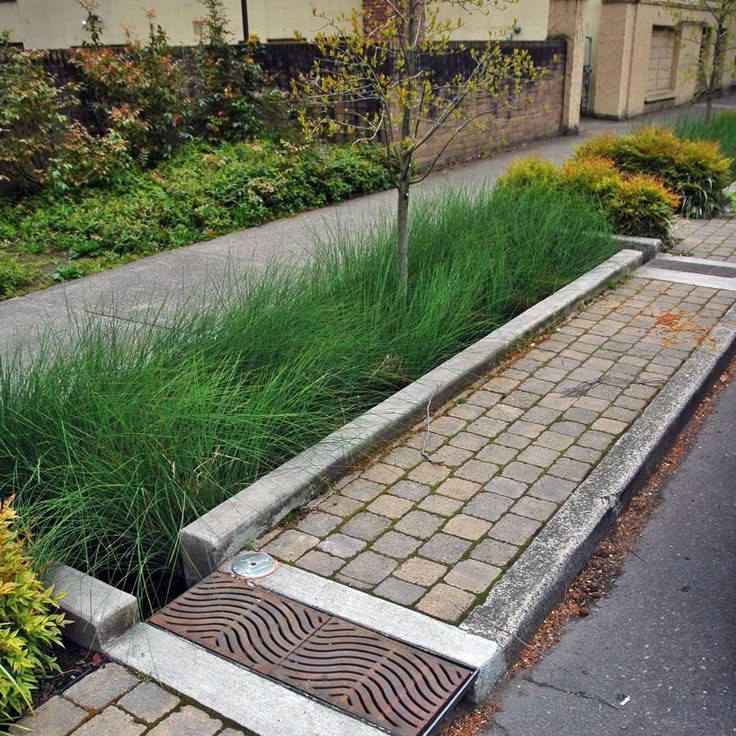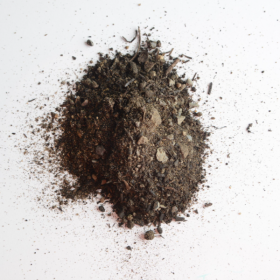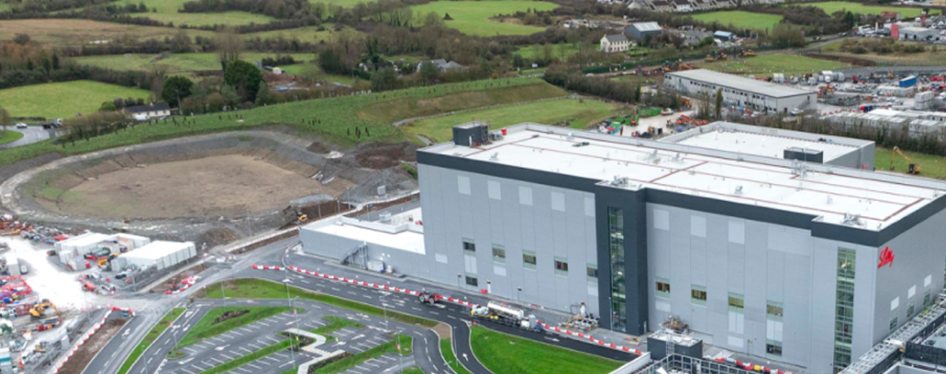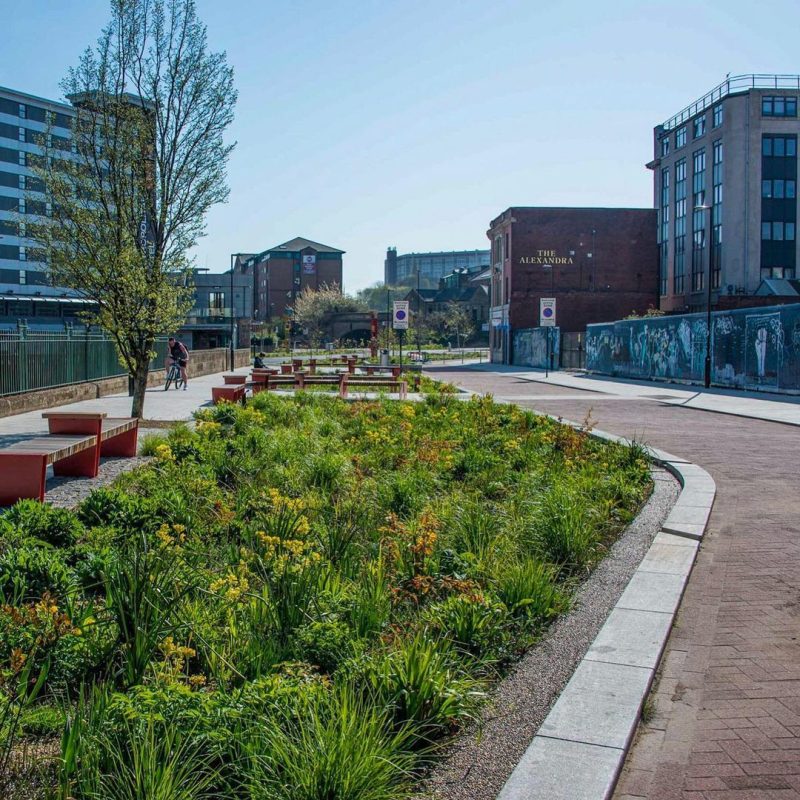Rain gardens are a natural solution to an increasingly urban problem, what to do with all that water. As hard surfaces in our towns and cities expand, rain that used to soak into the ground now runs across roads, rooftops, and paths. This stormwater picks up pollutants, pressures drainage systems, and contributes to flooding. The idea behind a rain garden is deceptively simple: slow it, store it, soak it. But the science behind it is slightly more technical, and that’s where soil engineering comes in.
At Enrich Environmental, we have been actively involved in supporting sustainable drainage schemes with custom designed soils used in rain gardens, bioswales, and bioretention areas. Using the CIRIA SuDS Manual as our specification guide, we engineer soil blends that not only manage water but also support healthy vegetation and long-term performance.
What Are Rain Gardens?

Rain gardens are shallow, vegetated basins designed to intercept, retain, and filter rainwater runoff from roofs, driveways, and other impermeable surfaces. The principle is to mimic the natural hydrological cycle by allowing water to temporarily pool and slowly infiltrate into the ground. Rain gardens can then reduce peak flow rates, improve water quality, and promote biodiversity.
But a rain garden is more than just a pretty planted pit. It functions as a miniature ecosystem, managing water quantity and quality. A well designed rain garden can reduce runoff rates, replicate natural infiltration, filter out pollutants, and create a more resilient landscape. It also contributes to the aims of the Water Framework Directive by reducing the volume and rate of stormwater entering water bodies, minimising erosion, and improving water quality.
The Soil Mix
The success of any rain garden depends on what lies below. Soils in rain gardens must balance three essential functions: infiltration, pollutant removal, and plant support. That means getting the texture, structure, nutrient levels, and permeability just right.
At Enrich, we supply several engineered soil blends specifically for this purpose:
- Type 2: A loamy soil blend with higher nutrient content, suitable for more demanding planting, where plant performance is also a priority.
- Type 6: A fast-draining mix with lower nutrients, ideal for installations with rapid infiltration needs.
- Type 17: Extremely free-draining, very low in fertility, used in schemes where maximum attenuation is needed, and maintenance is minimal.

Each blend is designed in line with CIRIA SuDS guidance. For instance, permeability rates should typically fall between 100-300 mm/hr, ensuring the garden drains within 24 to 48 hours post-rainfall. This permeability rate should be more than sufficient for most areas, with the average rainfall per month being 100 mm/hr. But the correct blend depends entirely on the planting scheme, drainage rate, and size of the contributing runoff area. If all the rainwater on a specific site is directed to a small rain garden it can exceed the permeability rate.
Soil amendments such as Enrich Organic Compost can be incorporated to enhance organic matter, increase water-holding capacity, and support microbial life. This is particularly important in low-nutrient profiles where vegetation needs a boost to establish successfully.
Design Features
Rain gardens must be carefully designed to maximise their hydrological function while still looking attractive in the landscape. Critical design factors include:
- The loading rate, or how much water is directed to the garden from surrounding surfaces.
- The size ratio between the rain garden and the area it drains.
- The soil permeability and depth to allow for proper infiltration without waterlogging.
- Vegetation suited to wet-dry cycles and local conditions.
Bioretention Areas and Bioswales
While rain gardens are typically smaller, standalone features, bioretention areas serve a similar purpose at larger scale. These are engineered landscaped basins designed to collect, slow, and treat stormwater.

A variation is the bioswale, a gently sloped, vegetated channel that conveys water while also filtering and infiltrating it. The soils used in bioswales must be stable, permeable, and capable of supporting vegetation under periodic inundation.
The Benefits of Rain Gardens
Beyond the technical benefits of stormwater control, rain gardens offer tangible improvements to our urban environments. They cool cities, support pollinators, and reduce the pressure on municipal drainage systems. Trees and plants established in engineered soils experience healthier root zones, better moisture regulation, and fewer transplant failures.
CIRIA defines the core functions of SuDS soils as: sustaining vegetation, treating pollution, transferring flows, maximising infiltration losses, and providing temporary storage. But achieving all of this in a single soil blend is a balancing act. High hydraulic conductivity may aid infiltration but could also lead to nutrient stripping and poor moisture retention. That’s why our engineered soils are carefully graded, blended, and tested to ensure they perform under site-specific constraints.
Whether you’re building a garden, a school SuDS scheme, or a commercial development, the soil is not just filler, it’s function.
Final Thoughts
Rain gardens are an interesting mix of horticulture and hydrology. At Enrich Environmental, we’re proud to support these systems with Irish-made soils, developed through science, guided by experience, and tested to specification.
